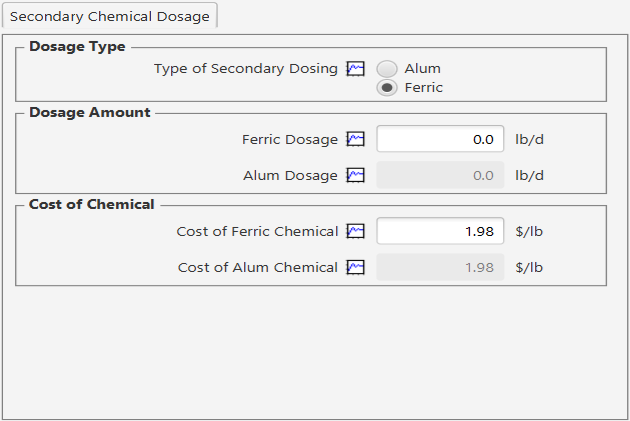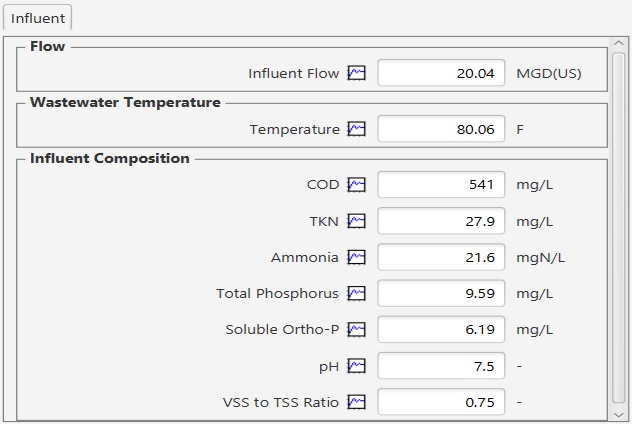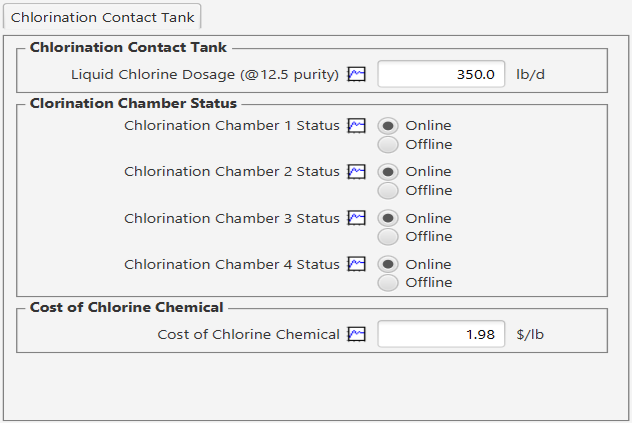
Customization
Observe a sampling of the wide variety of customizations that can be incorporated into SimuWorks.
Look and Feel
Each interface can be customized based on your needs. This includes adjustment of the appearance of unit processes, position of piping, and the relative location of input and output panels.
The goal is for the interface to replicate a bird's-eye view of the actual plant.

Extended aeration plant with plug-flow and continuous-mixed aeration, and effluent membrane filters. Lessons highlight the effect of process unit operational status and the impact of the solids retention time on plant performance.

Upstream trickling filters and downstream aeration basin performance captured in dynamic training interface highlighting nitrification dependence on temperature, clarifier operation and chemical addition.

Dynamic interface includes dual chemical dosing for phosphorous removal, UV disinfection, and batch wasting. Output panel provides visual indication of satisfaction of ECA effluent targets.

Dynamic interface developed to train operators on the theoretical performance of the solids treatment portion of the plant undergoing upgrades. Customized lesson plans highlight the effect of various operational settings on digester performance.
Input/Output
The input panels are adjusted to include user access to operational settings that would be available within the actual plant. Outputs are customized to highlight key operational and plant performance information.
Input panels are adjusted to provide users access to specific operational settings.
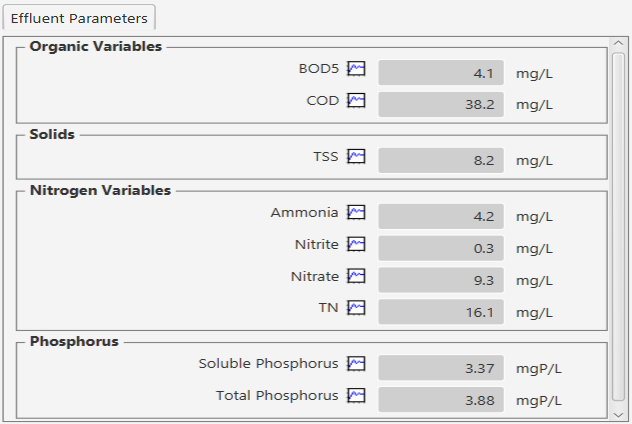
Output panels can be adjusted to present key variables such as the effluent quality.
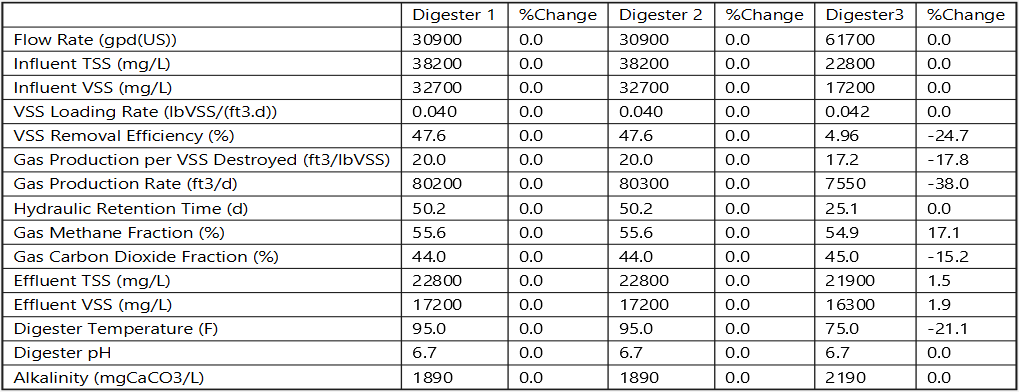
Dynamic tables can be created to display custom simulation output and calculations.
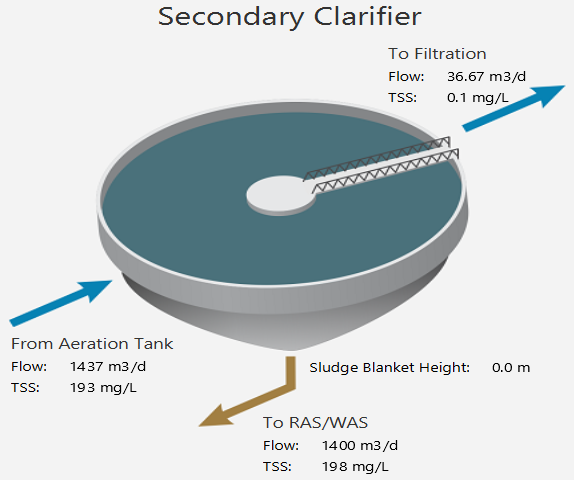
Zoomed-in images of specific unit processes display key operational performance variables.
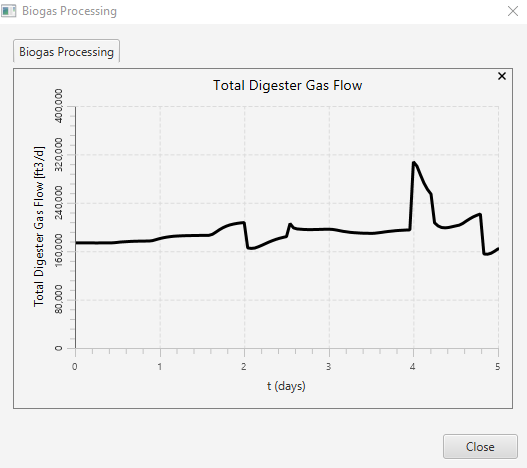
Output graphs display the value of performances variables as they vary with time due to dynamic plant operations.
Lesson Plans
Personalized lesson plans are created to guide users in their understanding of the cause-and-effect relationships that exist between input settings and plant performance.
Lessons may explore the effect of temperature on nitrification, or how the quantity of chlorine dosing impacts the level of coliform bacteria removal and production of disinfection by-products.
Example
The following lesson plan explores the effect of upstream operations on the digester performance
Scenario 6: Digester Feeding vs. Gas Production
The purpose of this scenario is to explore the effect of sludge feeding on digester performance.
Observe the results in the output panel. Make note of the following:
- Low hydraulic retention time (HRT)
- Moderate VSS destruction
- High methane fraction in output gas
Click Next below.

Scenario 6: Digester Feeding vs. Gas Production
Upstream of the digesters are the rotary drum thickeners (primary sludge) and the gravity belt thickener (secondary sludge). Changes to operation of these units can have significant effect on digester performance. Make the following adjustments:
- Rotary Drum Thickener:
- Pumped flow = 0.05 MGD(US)
- Gravity Belt Thickener:
- Pumped flow = 0.02 MGD(US)
Run the simulation to observe the impact of this change. Click Next below.

Scenario 6: Digester Feeding vs. Gas Production
This doubling of the influent flow to the digester has resuted in significant effects. Make note of the following:
- HRT has doubled
- Increased VSS destruction
- Increased gas production
- Decrease of the output gas methane fraction
Click Next below.

Scenario 6: Digester Feeding vs. Gas Production
Select the digester hotspot. You may notice that the operation temperature is low.
Make the following adjustment:
Rerun the simulation to observe the effect of this change.
Click Next below.

Scenario 6: Digester Feeding vs. Gas Production
As you can see the digester performance is strongly impacted by temperature. Make note of the following:
- Increase in VSS destruction
- Increase in gas production
- Decrease in gas methane fraction
Click Next below.

Scenario 6: Digester Feeding vs. Gas Production
To further your understanding of how digester performance is impacted try changing other aspects of plant operation such as the:
- Influent VSS/TSS ratio
- Amount of grit removal
- Number of clarifiers in service and their wastage flow
Click Next below.

Scenario 6: Digester Feeding vs. Gas Production
Lesson: The digester performance is strongly impacted by upstream process operation. In addition, a higher operating temperature increases biological activity in the digesters and allows for increased destruction of volatile solids.





